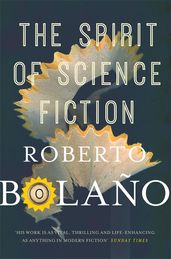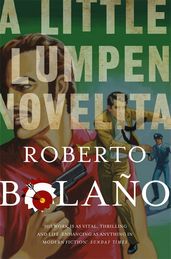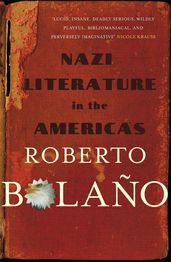The Spirit of Science Fiction
Roberto Bolaño
Translated by Natasha Wimmer
Synopsis
A tale of bohemian youth on the make in Mexico City from a master of contemporary fiction, and a sublime precursor to The Savage Detectives.
Two young poets, Jan and Remo, find themselves adrift in Mexico City. Obsessed with poetry, and, above all, with science fiction, they are eager to forge a life in the literary world – or sacrifice themselves to it. Roberto Bolaño’s The Spirit of Science Fiction is a story of youth hungry for revolution, notoriety, and sexual adventure, as they work to construct a reality out of the fragments of their dreams.
But as close as these friends are, the city tugs them in opposite directions. Jan withdraws from the world, shutting himself in their shared rooftop apartment where he feverishly composes fan letters to the stars of science fiction, and dreams of cosmonauts and Nazis. Meanwhile, Remo runs head-first into the future, spending his days and nights with a circle of wild young writers, seeking pleasure in the city’s labyrinthine streets, rundown cafes, and murky bathhouses.
The Spirit of Science Fiction is a kaleidoscopic work of strange and tender beauty, and a fitting introduction for readers uninitiated into the thrills of Roberto Bolaño’s fiction. It is an indispensable addition to an ecstatic and transgressive body of work.
Details
Reviews
Admirers will find . . . a satisfying proleptic glimpse of his picaresque masterpiece, 1998’s The Savage Detectives . . . [This] gem-choked puzzle of a book . . . serves as a key to Bolaño’s later work, unlocking clues to his abiding obsessions … [and] is a hardy forerunner that stands on its own.
The book’s very premise – two young poets drift around the literary underworld of Mexico City – reads like a dress rehearsal for The Savage Detectives, similarly soaked in poetry, disillusion, and longing. The novel is dappled with recognizably Bolañan pleasures, though they are mostly incidental. What The Spirit of Science Fiction offers most is the tingle of the nascent. It allows us to perceive the avalanche in the snowball before it rolls downhill.
Bolaño-philes will relish this glimpse into the conflicting facets of their hero’s personality, but the book is more than an autobiographical curio. It brings the Mexico City of the Seventies to life . . . The novel’s sunny sense of what it is like to be a young man falling in love – with words and ideas as well as with women – is irresistible.
The Spirit of Science Fiction is structured unconventionally, enticing the reader to solve its mysteries. Bolaño adroitly braids three related narratives . . . an entertaining, lyrical and accomplished novel.



